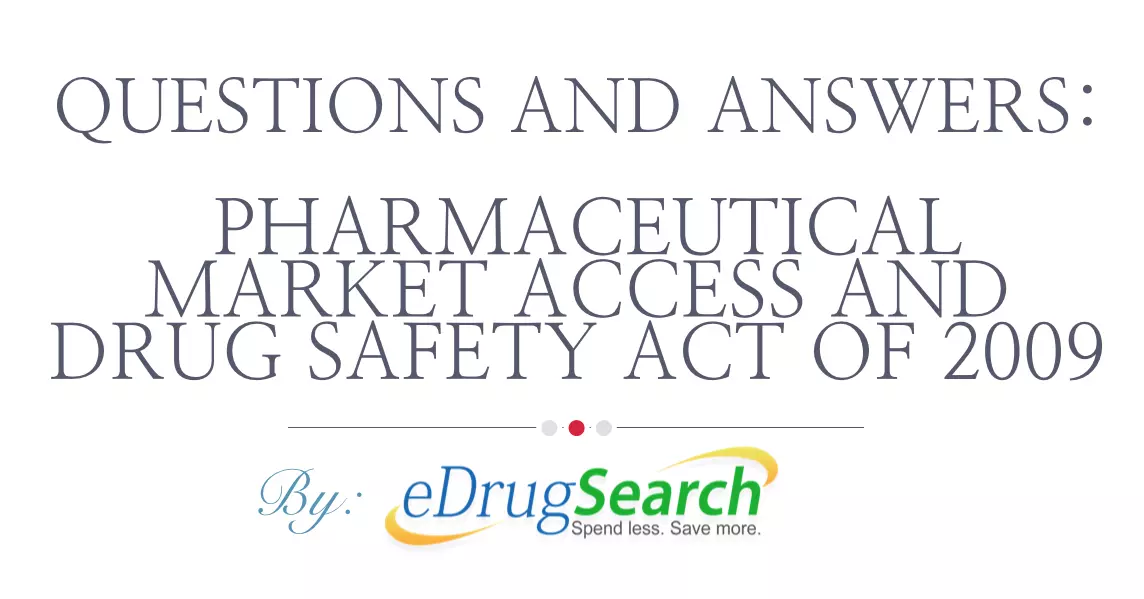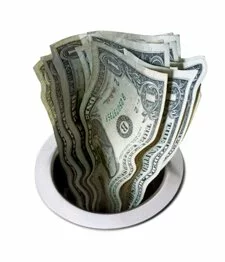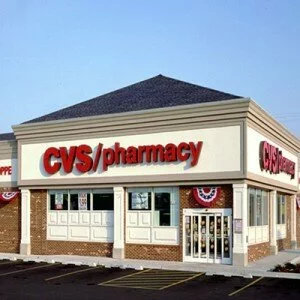 Healthcare reform isn’t just about the public option and paying for doctor’s visits — it’s also about equal, affordable access to life-saving medications for all Americans. That’s why many Big Pharma watchdogs are so disappointed with a recent amendment slipped into healthcare legislation that proposes extending patent protection on biologic drugs, delaying for years the public’s access to affordable follow-on versions.
Healthcare reform isn’t just about the public option and paying for doctor’s visits — it’s also about equal, affordable access to life-saving medications for all Americans. That’s why many Big Pharma watchdogs are so disappointed with a recent amendment slipped into healthcare legislation that proposes extending patent protection on biologic drugs, delaying for years the public’s access to affordable follow-on versions.
What are biologics? They’re the next big wave in medicine — drugs made not from simple chemical formulations, but from biological components. They’re very expensive, and poised for enormous success:
By 2014, the biggest-selling meds will be biologics, according to an analysis from Evaluate Pharma. Taking the place of Pfizer’s gargantuan drug Lipitor will be Roche’s Avastin, a cancer med expected to account for $9.23 billion in 2014 sales. (Even when you factor in the recent trial disappointments.) The next five top sellers, in order, are expected to be Humira (Abbott Labs), Rituxan (Roche), Enbrel (Wyeth/Amgen), Lantus (Sanofi-Aventis), and Herceptin (also Roche).
Evaluate also predicts that half of the top 100 drugs in 2014 will be biotech meds a huge change from last year’s level of 28 percent and 11 percent in 2000.
Because biologics are so complex, the system we all know, where patented brand names enjoy a period of exclusivity, then eventually make way to cheaper generics doesn’t translate perfectly. Biologic generics are called biosimilars, and they are not seen as generic equivalents. They must be submitted for approvals as new drugs and do their own clinical trials, etc.Â
The Eshoo-Barton amendment, named for sponsoring Representatives Anna Eshoo (D – Calif.) and Joe Barton (R – Texas), would give brand-name biologic drugmakers 12 years of market exclusivity. By comparison, President Obama favors seven years, and Rep. Henry Waxman (D – Calif.) feels that the public should have access to “generic†biologics after just five years. By contrast, says Medical News Today, “The Biotechnology Industry Organization maintains that there should be a minimum 14 years of exclusivity to account for a development process that on average takes 10 years and $1.2 billion for a product to reach market.”
5, 7, 12, or 14 years? As you can see, there is a real difference of opinion on this subject. One person who has written extensively on this is author James Love on the Huffington Post. Here he explains why this amendment is harmful:
The Eshoo/Barton amendment, which has the support of many newly pro-PhRMA democrats, will extend the period of monopolies for biologic medicines, when compared to the original Waxman text. The only question is how long. Part of the harm will be the longer period prohibiting generic suppliers from relying upon evidence that medicines are safe and provide therapeutic benefits. Much of the other harm will come from a number of technical changes in the bill that make it much easier for incumbent firms to block entry through technical issues, extended litigation, and ever-greening of protection from small medically unimportant changes in protected medicines.
This is essentially a case of innovation versus access. Drug companies want protection from the risks and costs borne in the creation and testing of new drugs; patient advocates say that Big Pharma (or Big Biotech, if you like) already make large profits and that the public deserves access to affordable biosimilars in a more timely fashion. Entities that support longer periods of exclusivity, such as universities, biotech companies and venture capitalists are fighting to protect inventors’ rights and ensure more thorough clinical trials. On the other side, consumer groups, labor unions, insurers and generic drug manufacturers ‘see shorter exclusivity as the way to deliver safe, affordable and quality drugs to patients and open the marketplace to increased competition, explains Medical News Today.
The latest high-emotion development is blogger Jane Hamsher’s Are You Or Someone You Know Paying $50,000 A Year For Drugs? It paints an ugly picture of what happens to people who cannot affording life-saving biologics. A few days later, Rep. Eshoo responded to this and other online attention with a blog post on The Hill’s Congress Blog titled Setting the record straight on our health care legislation. If you check in with these two articles, you’ll have the latest from both side of the “biologic generics” debate.
Our mission, as always, at eDrugSearch.com is to improve the American public’s access to safe, quality medications at an affordable cost.
For more information:
- Should We Be OK With The PhRMA Deal With White House?
- US House Panel Backs Exclusivity for Biologic Drugs
- Pay or die: Deadly Pharma amendment in HCR going right under radar
We’ve received a lot of questions from the eDrugSearch.com community about the Pharmaceutical Market Access and Drug Safety Act of 2009, the proposed legislation that would enable Americans, once and for all, to legally purchase prescription drugs from Canada.
Here some common questions about the bill, along with answers provided by the bill’s sponsors:
Q: Why is this bill necessary?
A: American consumers are charged the highest prices in the world for the same medicines that are available in other major, industrialized nations at a fraction of the cost. The Congressional Budget Office estimates this legislation will save U.S. consumers more than $50 billion over the next decade. The legislation will allow American consumers to import FDA-approved prescription drugs at the substantially lower prices available on the world market.
Q: How will it work?
A: Individual consumers will be able to purchase prescription medicines from registered Canadian pharmacies for their personal use or the personal use of a family member, via mail-order or the Internet. The FDA will be required to make available on its Web site a list of the Canadian pharmacies that are approved to ship prescription drugs to Americans. Drugs imported by American consumers would have to be in a 90-day supply or less, accompanied by a valid prescription.
Q: From what countries can prescription drugs be purchased under the act?
A: Individual Americans can purchase medicines from Canada via online and mail-order pharmacies or the Internet from Canadian pharmacies registered with the FDA. In addition, the bill allows U.S. licensed pharmacies and drug wholesalers to import FDA-approved medications from Europe, Australia, New Zealand, and Japan and pass along the savings to their American customers.
Q: Won’t Big Pharma just shut off supplies to Canadian pharmacies that sell to Americans?
A: For some time, Pfizer, Glaxo Smith Kline, Eli Lilly and others have worked to shut off the supply of drugs to those in Canada that export drugs to American consumers. Under the proposed legislation, such tactics are deemed an unfair and discriminatory trade practice and will not be permitted.
Q: What about Big Pharma’s claims that the proposed legislation would reduce their profits, and that research and development of new drugs would suffer as a result?
A: Drug companies spend a significant (and increasing) portion of their budgets on product promotion. In fact, Fortune 500 pharmaceutical companies on average spend nearly three times more on marketing, advertising, and administration than they do on R&D. And yet, the pharmaceutical industry never talks about needing to cut back on drug advertising. In addition, American taxpayers heavily subsidize pharmaceutical research both through the tax code and research at the National Institutes of Health.
Q: How much will American consumers save as a result of the Pharmaceutical Market Access and Drug Safety Act of 2009?
A: The Congressional Budget Office (CBO) estimates the legislation would reduce total drug spending by $50 billion over 10 years, with $10 billion of that in savings to the federal government. It’s important to note that the CBO found these significant savings even after adjusting for the weakening of the U.S. dollar and assuming that the dollar would remain at the same weak level over the course of its estimate. If the value of the dollar were to strengthen, the actual savings could increase substantially.
This needed legislation is currently in committee, where it could easily stall without your support. Please call your Congressman and Senator and ask them to bring the Pharmaceutical Market Access and Drug Safety Act to a vote.
The eDrugSearch.com e-book “99 Ways to Save Money on Your Prescription Drugs, 2012 Edition” is now available on Scribd, where you can see a preview of the book’s first 4 pages before purchasing.
Check it out and start saving on your prescription drugs now!
eDrugSearch.com’s 99 Ways to Save Money on Your Prescription Drugs 2012 Edition
 Anne Dunev at The Huffington Post recently called attention to a thought-provoking article published at the peer-reviewed journal of the Public Library of Science. Titled “The Cost of Pushing Pills: A New Estimate of Pharmaceutical Promotion Expenditures in the United States,” the 2008 article by Canadian academics Marc-André Gagnon and Joel Lexchin concludes:
Anne Dunev at The Huffington Post recently called attention to a thought-provoking article published at the peer-reviewed journal of the Public Library of Science. Titled “The Cost of Pushing Pills: A New Estimate of Pharmaceutical Promotion Expenditures in the United States,” the 2008 article by Canadian academics Marc-André Gagnon and Joel Lexchin concludes:
From this new estimate, it appears that pharmaceutical companies spend almost twice as much on promotion as they do on R&D. These numbers clearly show how promotion predominates over R&D in the pharmaceutical industry, contrary to the industry’s claim … (I)t confirms the public image of a marketing-driven industry and provides an important argument to petition in favor of transforming the workings of the industry in the direction of more research and less promotion.
Dunev elaborates on the way the pharmaceutical industry’s drive for growth has distorted public perceptions of diseases and how to treat them. She writes:
You don’t have to be a financial pundit to know that any public company is responsible first and foremost to their stockholders. As a public company how do you meet your fiduciary responsibility? You ensure the price of your stock by increasing your bottom-line.
Does that require that you make up new “diseases” as you go? (Restless Leg Syndrome, for example.) Do you bend the rules of science in how you determine what constitutes disease so you can repackage old drugs that have lost their patent? Do you push dangerous new drugs on the market knowing that a little collateral damage is the price of making money, just as it is the price of making war?
According to USA Today in 2005, there were 1,274 registered pharmaceutical lobbyists in Washington, D.C. — more than two for every member of Congress. In 2003, $143 million was spent on lobbying activities by the Pharmaceutical industry. There are more lobbyists from pharmaceutical than any other industry trying to bend legislators’ ears.
This is big business, and that means that your health care is not in the hands of people who really want to help you, but in the hands of people who view you as a market. Caveat emptor.
Clearly, whatever healthcare reform the government enacts must include some control over pharmaceutical marketing. Remember, less than 20 years ago, direct-to-consumer advertising by pharmaceutical companies was not permitted by the FDA. That would seem to be a good start as we try to get drug costs back under control.
 You probably didn’t see it in the news — since it got about 1/1000th of the coverage received by Sarah Palin spatting with David Letterman and Spencer and Heidi quitting “I’m a Celebrity … Get Me Out of Here” — but a noteworthy legal settlement occurred last week.
You probably didn’t see it in the news — since it got about 1/1000th of the coverage received by Sarah Palin spatting with David Letterman and Spencer and Heidi quitting “I’m a Celebrity … Get Me Out of Here” — but a noteworthy legal settlement occurred last week.
A major drug wholesaler, McKesson Corp., and two drug-price publishers have settled a class-action lawsuit accusing them of inflating drug prices. Here’s an explanation of what they did, according to the suit:
“Prescription drugs often are priced using certain benchmarks. The most common pricing benchmark is called the Average Wholesale Price (“AWP”). AWP is often used in determining how much insurance companies and other Third-Party Payors will reimburse for these prescription drugs and the co-payment price that some consumers pay for them. The lawsuit claims that two Defendants, McKesson Corporation (“McKesson”), a large drug wholesaler, and First DataBank (“FDB”), a publisher of drug data, wrongfully inflated the mark-up factor used by FDB to determine the AWP for certain prescription drugs (“Subject Drugs”). The lawsuit claims that, as a result, many drug purchasers overpaid for these drugs.”
The defendants have agreed to pay out $350 million to reimburse patients, insurers and employers. And — here’s the really interesting part — the court has ordered the prices of hundreds of brand-name drugs to be cut by about 4 percent, which, theoretically, could result in $1 billion in drug savings the first year alone.
But don’t count on dollars dropping from the sky in your direction. Analysts told the Wall Street Journal that drug pricing is so “opaque and complex, patients won’t likely get meaningful and long-lasting relief.”
I’m afraid I have to agree that most Americans will never see a dime of savings from this settlement. But let me break down this “opaque and complex” thing, because it’s really neither.
Many of these brand-name drugs have patents that give them pricing monopolies. They can throw a dart at the board and make the price whatever they want.
So, the court orders a 4 percent price cut? Whoa!
It’s not uncommon for drug makers to raise their prices by five times that in a year. What’s another 4 percent thrown in? Who would know? And who are we kidding?
Opaque, huh?
To find out if you are eligible to collect from the $350 million settlement fund, go here.
And for a complete list of the overpriced drugs, which include Lipitor, Lamisil, Monistat, Cipro, Zofran and many, many more, go here.
Scientific American has published an article examining the problem of high prescription drug costs as well as proposed solutions. Some salient stats referenced in the article:
- American households annually spend more money on health care than on education and entertainment combined.
- American households spend more than $200 billion on prescription drugs each year.
- 45 million Americans, including eight million children, do not have health insurance.
- Free drug samples are generally given to those who already have health insurance — not to those who need them most.
- 41 percent of Americans report at least some difficulty in paying drug bills.
- 30 percent of Americans reported that they did not fill prescriptions because of the cost.
Here are a couple of the overall conclusions of experts cited in the story:
Stephanie Woolhandler, an associate professor of medicine at Harvard Medical School, says that free samples and industry assistance programs — which Big Pharma touts as solutions to high costs — are “mostly a way of diffusing much of the anger Americans feel about drug prices … It’s not an overall solution to this problem.”
Cheryl Matheis, a senior vice president for health strategy at AARP, says, “Pharmaceutical companies need to change their business model [and] we need to have a system where everybody is covered, whether it’s private insurance coverage or government-sponsored coverage.”
Stephanie and Cheryl are right on. Big Pharma is dead wrong. You know it, and I know it. Make sure your Congressperson knows it, too.
A North Dakota news site reports that drug prices are under the microscope in the state as legislators consider repealing a law that prevents most chain pharmacies from competing there. The law requires pharmacies to be majority-owned by North Dakota licensed pharmacists.
Supporters of repeal argue that allowing the big retailers to offer prescription drugs will encourage price competition and result in lower costs for consumers. To test this, The Forum of Fargo-Moorhead “took the five most common prescription drugs in North Dakota and compared their prices at four area pharmacies – two in North Dakota and two in Minnesota.”
The results showed that North Dakotans weren’t paying more for these drugs than Minnesotans, after all. However, there was something striking about the survey. It revealed huge, seemingly random variation in pricing for top-selling drugs. The location of the pharmacy was not a factor in these variations.
For example, some pharmacies in both states sold the cholesterol drug Simvastin (20 mg, 30 count) for less than $20, whereas a North Dakota CVS was selling the same medication (same dosage, same quantity) for $54.59.
The reality is that large chains can help with the prices of some generics — the Wal-Mart $4 drug program has been matched by an increasing number of competitors — but there is still little real price competition for the vast majority of prescription drugs, whether or not national chains are part of the mix.
There are two main reasons for this:
1. Pharmaceutical companies have patents that give them virtual monopolies on the sale of brand-name drugs in the United States, allowing them to charge distributors whatever they wish.
2. Pharmacies are not transparent in sharing their prices on most drugs with consumers — meaning it is difficult to comparison shop, a fact that results in inefficient, inflated pricing.
For both these reasons, eDrugSearch.com is the better option — particularly for the tens of millions of Americans without health insurance.
-
 Subscribe in a reader
Subscribe in a reader -
Ads

-
-
How to Safely Buy Prescription Drugs Online from Cary Byrd on Vimeo.
-
Medi-Share: Christian Health Insurance Alternative

-
Search Blog Posts
-
Blogroll
- DrugWonks.com
- Eye on FDA
- Health 2.0
- Kevin, M.D.
- Pharm Aid
- Pharma Marketing
- PharmaGossip
- Pharmalot
- The Health Care Blog
- The Peter Rost Blog
- World Vision
-
Our Healthcare100 Ranking
-
Archives
-
Tags
adverse drug reactions Affordable Care Act big pharma Canadian drugs canadian pharmacies canadian pharmacy compare drug prices consumer reports CVS pharmacy divine healing Drug costs Drug Importation Drug Prices eDrugSearch.com FDA Fosamax healing scriptures Health 2.0 healthcare100 healthcare reform high drug costs Hypertension Jehova Rophe Jesus Christ Lipitor mail order pharmacies Medi Share miracles Obamacare online pharmacy dictionary osteoporosis personal drug importation Pharmacies pharmacy spam Prescription drugs Proverbs 3:5-8 reimportation relenza Roche rogue online pharmacies saving money Tamiflu The Great Physician The Lord our Healer wal-mart


